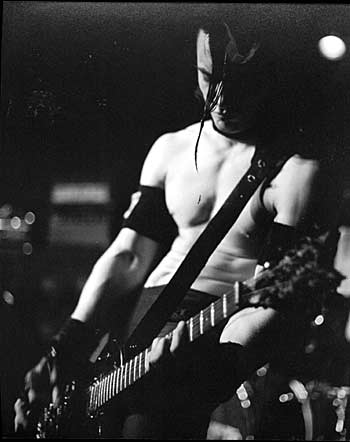Punk found its roots in the garage rock acts of the 1960s. While the majority of acts were bashing out songs inspired by the British invasion with only a fraction of their talent, acts like the Stooges and the Velvet Underground were forging a new sound. It was a conduit for a new, angst-ridden, anti-authoritarian movement that came to define the youth of the 1970s. The rapidly strummed power chords, crushing electric guitar and in-your-face style combined with the underlying political ideology to make music that sent a shot of adrenaline up the spines of the day’s youth. The guitarists of this era were a huge influence on modern punk acts, as well as many metal bands that formed in the 80s.
The first article in the series looks at Johnny Thunders, the guitarist of the New York Dolls, arguably the first true punk band. Thunders was heavily inspired by Keith Richards, and whilst he laid down many of the conventions of punk (three-chord songs, simplistic strumming and plenty of attitude) he did bring in blues elements to create some of his most memorable riffs. Here, you’ll pick up the basics of punk and see how a carefully added note can bring a riff to life.
The next article in the series is another Johnny, but this time the Ramone variety. The Ramones are also widely credited as one of the first punk bands, and Johnny’s rapid, down-strumming style served as an influence for many bands to follow. In this article, you’ll practice your down-stroke strumming and get to grips with the style of Johnny Ramone.
The Sex Pistols are one of the names most closely associated with punk, and guitarist Steve Jones is the topic of the next lesson in the series. Jones wasn’t above including solos in his songs, and his use of palm muting in the verse sections started a punk convention that continues to the modern day.
Mick Jones is the guitar maestro behind London punks the Clash. They share many characteristics with their contemporaries the Sex Pistols, but are more considered in their approach. His staccato playing style, inclusion of open chords and powerful riffs are the focus of this lesson, introducing several new techniques which are particularly useful if you’re interested in ska-punk.
The next lesson looks at the unique, rockabilly-infused punk style of Billy Zoom, from the LA band X. The broad set of influences Zoom brought to the band separated them from other LA acts such as Black Flag, and this article introduces you the things that made him stand out. Along the way you’ll learn hammer-ons and learn how minor chords can be incorporated into punk songs.
The final lesson focuses on the style of guitarist D. Boon, from the California punk act the Minutemen. Their influences spread even wider than those of X, with Boon incorporating elements of everything from folk to free-form jazz in his playing style. The lesson shows you how bends can add a bluesy feel to solos, and shows you how simple punk songs can be built from more than just power chords and majors.
http://www.guitartricks.com/guitarglossary.php?term=Drop%20D%20tuning
It’s a rag-tag group of punk guitarists, but their influence has spread to other musicians because of the innovative approaches, whether from the early days of punk or as the genre came to evolve over time. The journey draws from diverse musical influences, but always has the four-chord rocking attitude you associate with your punk heroes.
So, let’s get started!
